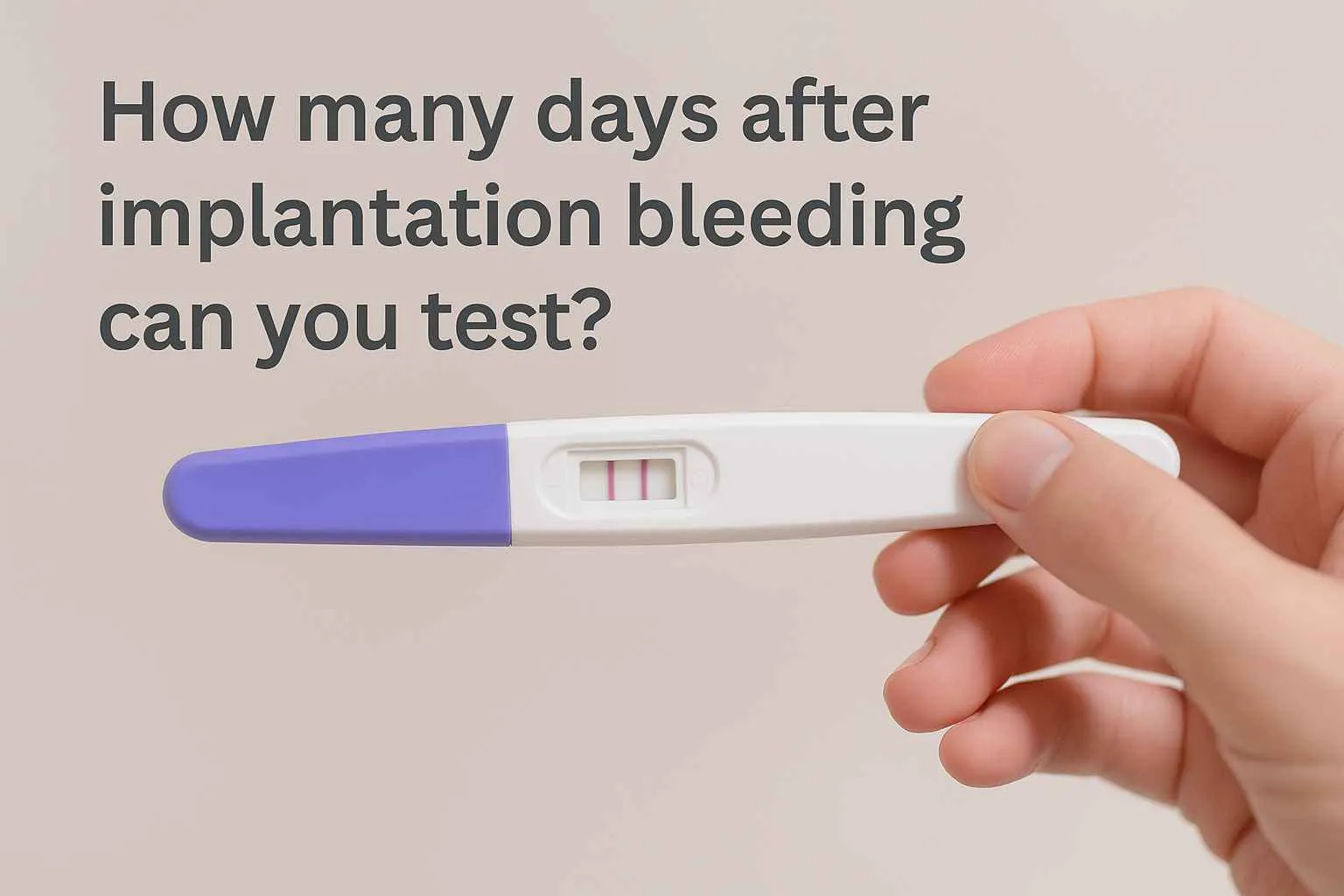Have you ever found yourself wondering, “Why am I bleeding so much during my period?” You’re not alone. Millions of women face heavy menstrual bleeding, but few know the true cause behind it, and in many cases, it’s more than “just a bad period. One common, yet overlooked, culprit is uterine fibroids. These non-cancerous growths can silently grow in your uterus, often without warning. But do fibroids cause bleeding? Yes, especially certain types like submucosal fibroids. many women don’t link their heavy periods to fibroids until it’s too late.
Understanding the what, why, and how of fibroid bleeding can help you make smarter decisions about your health before things get worse.
Let’s break it all down in this guide.
Do Fibroids Cause Bleeding?
Yes, uterine fibroids usually lead to abnormal or heavy bleeding, particularly during menstruation.
This bleeding occurs because fibroids have the ability to:
- Increase the surface area within your uterus
- Interfere with normal uterine contractions
- Change hormone levels that control your menstrual cycle, which cause hormonal imbalances that increase blood flow.
Actually, heavy menstrual bleeding is one of the most prevalent and earliest indicators of fibroids, particularly submucosal and intramural.
If you’re soaking pads within an hour, bleeding for more than 7 days, or passing large clots, fibroids may be the cause.
Submucosal fibroids (which grow inside the uterine cavity) and large intramural fibroids (within the wall) are especially known to cause severe menstrual bleeding.
Signs Your Bleeding May Be From Fibroids:
- Soaking through a pad or tampon every hour
- Periods that last longer than 7 days
- Passing large blood clots
- Feeling weak, tired, or anemic
Let's now move forward to make you more aware of fibroids.
What Exactly Are Uterine Fibroids?
Uterine fibroids, also called leiomyomas or myomas, are growths made mostly of muscle cells and fibrous tissue. They grow inside, within, or on the outside of the uterus. These growths are non-cancerous, but they can still cause major symptoms, especially when it comes to periods.
Types of Fibroids (Based on Location):
| Type | Where It Grows | Bleeding Risk |
|---|---|---|
| Submucosal | Inside the uterine lining | High |
| Intramural | Within the muscular uterine wall | Moderate to High |
| Subserosal | Outside the uterus | Low |
| Pedunculated | On a stalk, inside or outside | Varies |
Some are as small as a pea
Others grow as large as a melon
Some remain unchanged for years
Others grow rapidly in months
The location and size of fibroids determine how likely they are to cause symptoms like bleeding, pain, or pressure.
How Common Are Fibroids Around the World?
Globally, fibroids affect 75% of women of reproductive age. That’s a shocking number when you think about it. Still, many women aren’t diagnosed until symptoms become unbearable. Incidence varies across countries and ethnicities. For example:
African-American women have higher rates and earlier onset.
Caucasian women still experience fibroids, but symptoms may differ.
Major Causes and Risk Factors of Uterine Fibroids
While fibroids aren’t caused by one single factor, researchers have uncovered several triggers. These triggers are important because understanding them can help women prevent or manage fibroids better.
1. Hormonal Imbalances
Estrogen and progesterone feed fibroids. That’s why they often grow during reproductive years and shrink after menopause.
Fibroids thrive on estrogen
Birth control or hormone therapy may worsen them
Hormonal shifts during pregnancy can speed up growth
2. Genetics
If your mother had fibroids, you’re likely to have them too.
First-degree relatives matter
Family history increases risk by 3X
Certain gene mutations are also linked
3. Lifestyle and Diet
Certain habits may make fibroids worse.
High red meat intake
Low fiber diet
Alcohol and caffeine use
Obesity increases estrogen production
4. Age and Race
Fibroids are most common in women aged 30–50.
More common and severe in Black women
Risk increases with age until menopause
Earlier onset is linked with genetics
5. Environmental Triggers
Chemicals and endocrine disruptors may contribute.
Hair relaxers, plastic containers, and pesticides
Long-term exposure may interfere with hormones
Risk Factors for Uterine Fibroids
Risk Factor | Description | Influence on Fibroids |
Estrogen/Progesterone | Hormonal fuels for fibroid growth | High |
Family History | Genetic link to fibroid development | High |
Obesity | Increases estrogen production | Moderate to High |
Diet & Lifestyle | Red meat, alcohol, low fiber | Moderate |
Age | 30–50 most common | High |
Ethnicity | Higher risk in African-American women | Very High |
These triggers don’t act alone. Combined, they can make fibroids cause bleeding, pelvic pressure, and more.
Other Common Fibroid Symptoms
Bleeding isn’t the only problem fibroids cause. Here's what else to watch out for:
1. Pelvic Pain or Pressure
Dull aches in the lower abdomen
Feeling “full” or “bloated”
Pain during sex
Back or leg pain
These symptoms often worsen as fibroids grow.
2. Fertility & Pregnancy Issues
Trouble getting pregnant
Recurrent miscarriages
Complications like breech position or early labor
Fibroids can block the fallopian tubes or distort the uterus.
3. Digestive or Bladder Problems
Frequent urination
Constipation or difficulty with bowel movements
Urinary urgency at night
How Are Fibroids Diagnosed?
Diagnosis often depends on:
Access to healthcare
Awareness levels
Genetic predisposition
Many women only discover fibroids when planning pregnancy, or after they’ve tried everything to control heavy bleeding without success.
You won’t always feel them, but doctors can find fibroids during a regular pelvic exam. Still, the imaging tests listed below are the gold standard:
1. Ultrasound
Transvaginal or abdominal
Quick and painless
First step for diagnosis
2. MRI
Provides a more detailed view of the fibroids' size and placement than ultrasound
Helps plan surgery
Can locate exact fibroid positions
3. Hysterosonography or Hysteroscopy
Uses saline to expand the uterus
- Looks inside the uterus for submucosal fibroids
Allows a clear view of fibroids
Helps assess if fibroids cause bleeding
4. Biopsy (rare)
Used to rule out cancer
Only done if symptoms are unusual
Doctors often monitor small fibroids over time. If they grow or start bleeding, treatment options are discussed.
Treatment Options If Fibroids Cause Bleeding
Not every fibroid needs surgery.Treatment depends on the severity of bleeding, the size and location of fibroids, and your future pregnancy plans.
1. Medications
NSAIDs for alleviating pain and inflammation
Tranexamic acid to reduce heavy bleeding
Hormonal birth control or IUDs to help control bleeding (though not for all fibroid types)
GnRH agonists/antagonists to temporarily shrink fibroids
2. Non-Surgical Procedures
Uterine Artery Embolization (UAE): Blocks/cuts off blood supply to fibroids
MRI-Guided Focused Ultrasound: Destroys fibroids with heat
3. Surgical Options
Myomectomy: Removes fibroids but preserves the uterus
Hysterectomy: Removes the uterus entirely (definitive cure)
Each treatment has pros and cons. Talk to your doctor about the right path. If fibroid-related bleeding is affecting your quality of life, don’t wait; explore your treatment options with a gynecologist.
How to Manage or Prevent Fibroids Naturally
There’s no way to stop fibroids 100%, but you can reduce the risk or slow their growth with certain lifestyle changes.
1. Dietary Adjustments
Eat more green veggies, fruits, and whole grains
Cut back on red meat, processed food, and sugar
Avoid alcohol and limit caffeine intake
2. Lifestyle Choices
Maintain a healthy weight
Exercise regularly
Avoid chemicals like BPA, parabens, and phthalates
3. Track Symptoms
Use period tracking apps
Note bleeding patterns, flow, and clots
Share this info with your doctor for a better diagnosis
These steps may not cure fibroids, but they can help delay treatment or control symptoms early.
When to See a Doctor?
Don’t ignore these warning signs and immediately visit a gynecologist:
Bleeding through pads every hour
Periods lasting longer than 7 days
Fatigue, dizziness, or anemia
Pressure, pain, or bloating in the pelvis
Difficulty getting pregnant
Fibroids grow silently. Many women ignore heavy periods, thinking it’s just how their body works. Early action can stop the cycle of pain, anemia, and emergency care. The sooner you identify fibroids, the more options you’ll have to treat them before they cause major complications.
Final Thoughts
Uterine fibroids aren’t rare, and they’re not harmless. When ignored, they can cause years of suffering, missed work, and emotional stress. So, if you’ve been asking yourself, “Do fibroids cause bleeding?” The answer is yes, often and significantly. Don’t wait. Speak with your doctor and make informed decisions about your health.
Because understanding your body is the first step to taking control of your health.
वारंवार विचारले
Can fibroids disappear without treatment?
Some fibroids shrink on their own, especially after menopause when hormone levels drop. But most stay the same or slowly grow. It depends on age, hormone changes, and health. Not all fibroids need treatment unless they cause symptoms like pain or heavy bleeding.
Do birth control pills shrink fibroids?
Birth control pills don’t shrink fibroids, but they help control symptoms like bleeding and cramping. They can help manage cycles but won’t make fibroids smaller. If the bleeding gets worse or the fibroids grow, you may need another treatment.
Are fibroids always painful?
No, many women don’t feel anything. But when fibroids press on organs or grow large, they cause pain, bloating, and pressure. Some women feel fine, while others can’t function during their period. Pain depends on size, location, and how fast they grow.
Can I still get pregnant with fibroids?
Yes, many women with fibroids have healthy pregnancies. But large or poorly located fibroids can block the uterus or fallopian tubes, making pregnancy harder. It may also raise the risk of early labor or miscarriage. Each case needs a full checkup.
Are fibroids ever cancerous?
Nearly all fibroids are benign. Less than 1% turn cancerous. Doctors usually check size, speed of growth, and symptoms. If a fibroid grows fast or looks strange on scans, more tests might be done. But most don’t raise any cancer concern.
लिहिलेले







